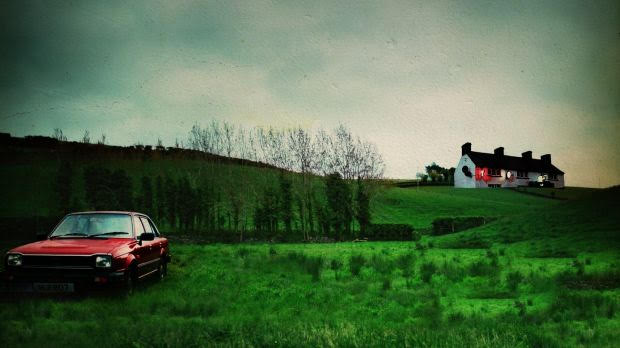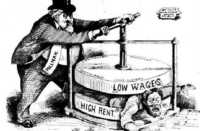No Stone Unturned (2017) is a documentary film about the Loughinisland massacre, directed by Alex Gibney. For those unaware of what happened in Loughinisland or, like me, who were born after the events took place, the two-hour documentary is well worth watching; and for those who remember the events well it provides some new information that sheds light on the atrocity.
On 18 June 1994, in the small town of Loughinisland, Co. Down, a group of local people were in the Heights Bar watching the Irish soccer team beat Italy in a World Cup match on television. At 10:10 p.m. two men wearing boiler suits and balaclavas entered the bar; one of them brandished an automatic rifle and began shooting into the crowd after shouting “Fenian bastards!” They then left and escaped in a waiting car. Six people were killed in the attack, including an 87-year-old man. The attack was claimed by the Ulster Volunteer Force.
Up until the massacre the small rural community of Loughinisland had been relatively untouched by the conflict in the north-east of Ireland. As a family member of one of the victims says in the film, the conflict was “something that happened in Belfast.”
After the atrocity the RUC assured the victims’ families that they would “leave no stone unturned” in the search for the perpetrators. As the documentary shows, however, the RUC made little effort to bring the UVF gang responsible to justice.
The day after the massacre the getaway car was found abandoned in a field, and several weeks later the assault rifle used was discovered, along with a bag containing the boiler suits, gloves and balaclavas as well as pistols and ammunition. The RUC at this time had information on the UVF gang operating in the area, who were probably responsible for the massacre as well as previous sectarian murders. Yet despite all this, no-one was charged.
Furthermore, some of the evidence was “mislaid” or destroyed; the RUC even admitted to destroying the getaway car, the largest physical piece of evidence in the whole investigation.
The film goes on to make startling, though unfortunately not surprising, claims in regard to state-directed killings, with the state, through the RUC, using loyalist paramilitaries to carry out the attacks.
The continuing revelations surrounding collusion between the British forces and loyalist gangs have been documented in recent books by Anne Cadwallader and Margaret Urwin. Some of the revelations in the film relating to collusion regarding Loughinisland are so shocking that it is best to watch the documentary to fully get your head round it, especially the facts concerning the letter sent to an SDLP councillor that is revealed in the film.
What is clearly established is that the RUC had at least one informant in the three-man UVF gang that carried out the attack, and had prior knowledge of the attack, yet took no action to prevent it. Instead they destroyed evidence relating to the case. In 2011 an investigation by the police ombudsman concluded that, while there were failings in the investigation, there was no collusion. However, in 2016 a new investigation, prompted by complaints from the victims’ families, concluded that collusion did indeed play a part.
The film-makers put so much effort into researching the case that they are even willing to name the leader of the UVF gang, and to film him. Indeed a former RUC member reveals that the RUC knew who carried it out but that when the man was arrested and interrogated they spent the interrogation trying to get him to kill an IRA member!
This type of revelation runs through the film and will obviously put the production team into legal trouble; but this is part of the reason why this film should be seen.
The documentary is certainly not perfect. Its explanation of the background to the conflict in the Six Counties, simplified for an intended American audience, rehashes the same old clichés. It does not give a satisfactory explanation of the role of British imperialism but rather suggests it was all a simple case of Catholics and Protestants not getting on. This is the standard British imperialist interpretation, put forward by the BBC and others, which presents the British as a sort of neutral peacekeeping force in Ireland, rather than the belligerent force they were in reality.
As a result, the film does not adequately explain why collusion between loyalist paramilitaries and the state forces was so common, or the role British intelligence played in the Loughinisland massacre.






